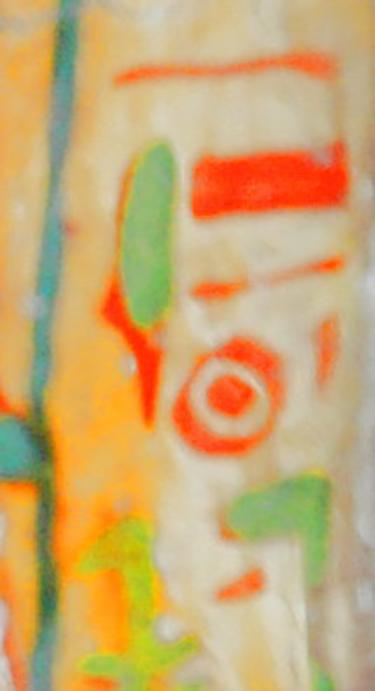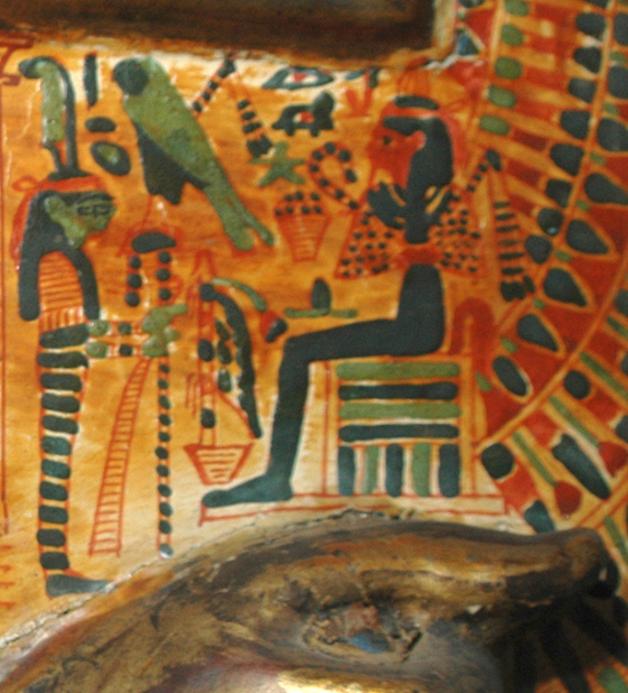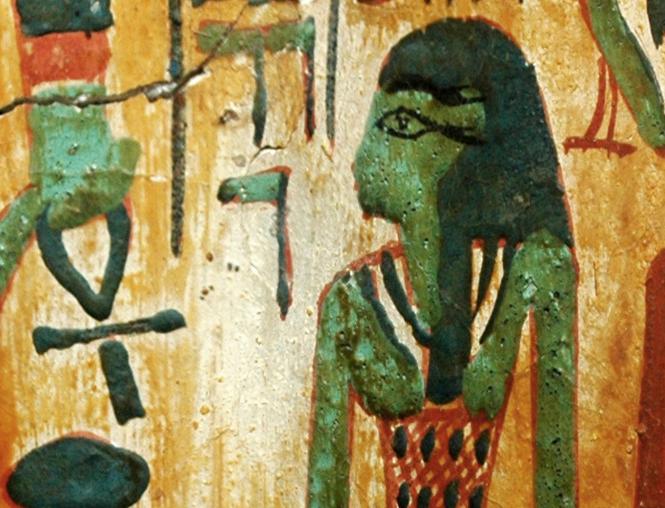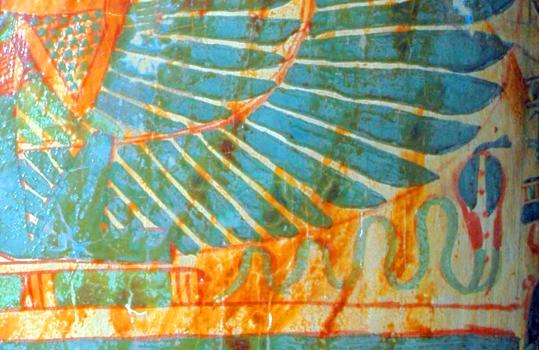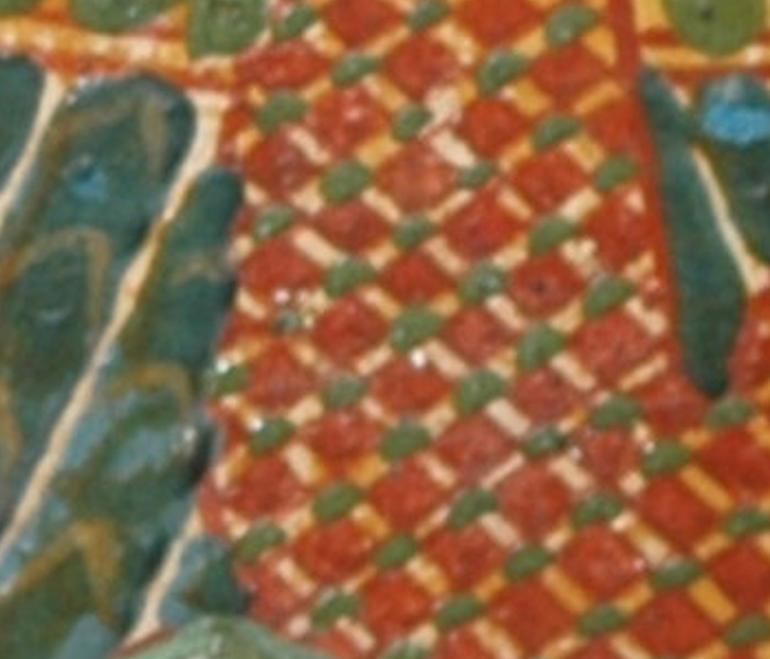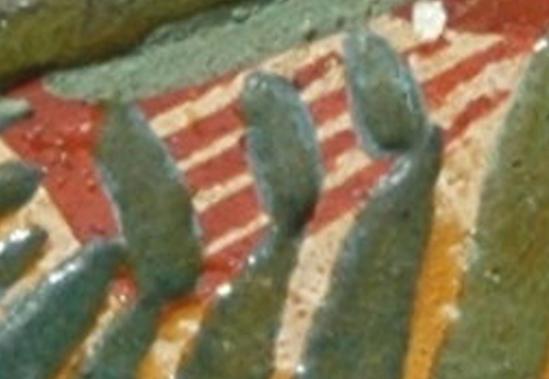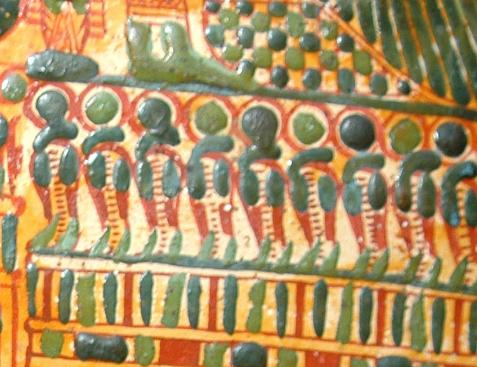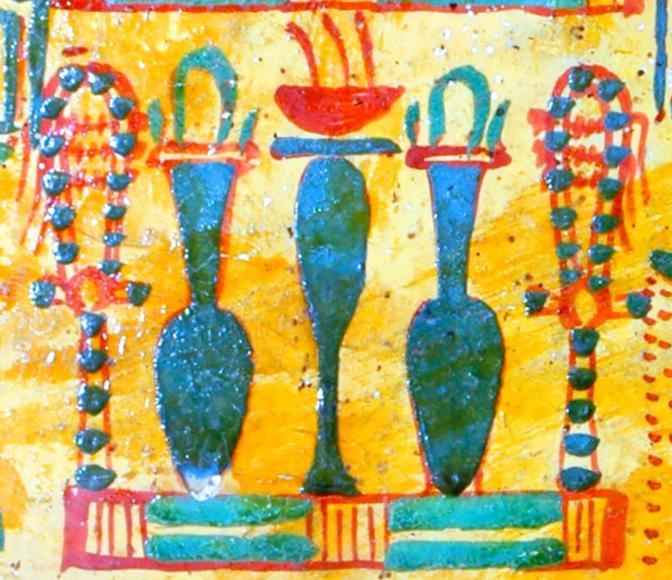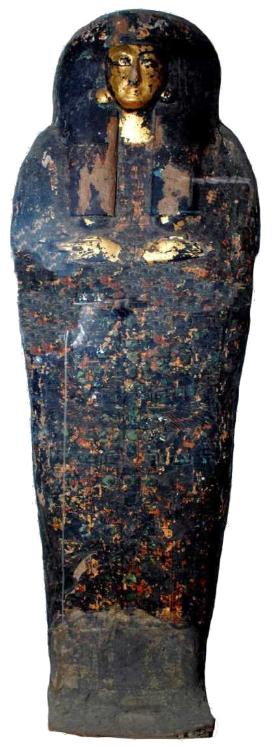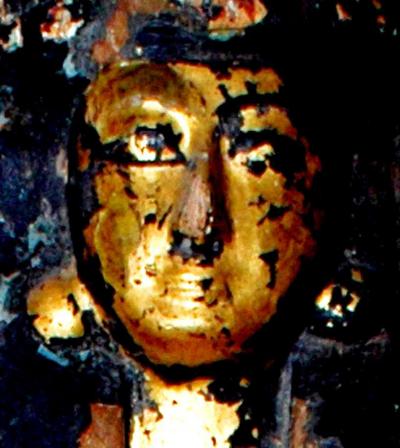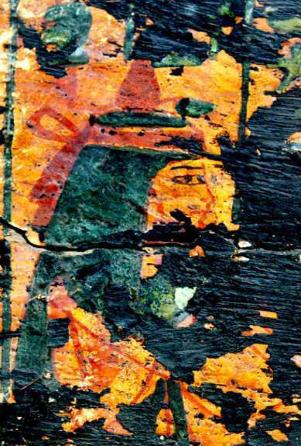| Russian Academy of Sciences Centre for Egyptological Studies, Moscow (CESRAS) & Russian Institute of Egyptology in Cairo (RIEC) Research on the Funerary Art of the 21a Theban Dynasty of Payanch and Personages of that Period (1070-945 BCE) Site Directory Personages Artifacts Iconography Deities Royal Cache TT320 Network Index |
Intellectual property of the Russian Academy of Sciences, Centre for Egyptological Studies, Moscow R.F. This material may be freely used for non-commercial, educational,
and public services applications. If you use our material, please give a credit to CESRAS, Moscow, and make a link to http://www.cesras.org. You may contact us by email:
admin@cesras.org and we would be happy to help you in any way we can. Thanks for your visit to this site and please do come again. There will always be something new!
and public services applications. If you use our material, please give a credit to CESRAS, Moscow, and make a link to http://www.cesras.org. You may contact us by email:
admin@cesras.org and we would be happy to help you in any way we can. Thanks for your visit to this site and please do come again. There will always be something new!
ACHIEVEMENTS AND PROBLEMS OF MODERN EGYPTOLOGY
Proceedings of the International Conference held in Moscow on September 29-October 2, 2009
Edited by Galina A. Belova
Digital photographic addenda to the paper THEY WERE NOT YELLOW, 21st (21a) Theban Dynasty
Edward R. Loring
Proceedings of the International Conference held in Moscow on September 29-October 2, 2009
Edited by Galina A. Belova
Digital photographic addenda to the paper THEY WERE NOT YELLOW, 21st (21a) Theban Dynasty
Edward R. Loring
Cairo CG61029 HPA Pinodjem II 993-970 BCE Thebes D21a TT320
Mummy Cover: clear evidence of white background at foot and in
throne. Pinodjem's coffins are unusually carefully and almost
completely varnished. However, as in most cases in the Cairo National
Museum and elsewhere, one is not able to see a complete coffin.
Mummy Cover: clear evidence of white background at foot and in
throne. Pinodjem's coffins are unusually carefully and almost
completely varnished. However, as in most cases in the Cairo National
Museum and elsewhere, one is not able to see a complete coffin.
Cairo CG61029 HPA Pinodjem II: inner
coffin, lid, left side.
Name: jmen-raw nTr on pure white
background
coffin, lid, left side.
Name: jmen-raw nTr on pure white
background
It would not be fair or correct not to include the coffin of a member of the family
Dynasty of Payanch which was found in TT320 and was painted on a yellow
background.
CAI CG61033 Nesytanebetischerw, daughter of HPA Pinodjem II and Nesychonsw. We
have no way to explain why her first class coffins with gilding not only of the masks,
but small remains of such can still be seen on the outer tub were covered with black
bitumen. Fragments of the painted decoration which I have been able to bring to light
are typical D21a artwork. Extensive "photoshopping" methods have made it clear that
the original background was yellow.
Dynasty of Payanch which was found in TT320 and was painted on a yellow
background.
CAI CG61033 Nesytanebetischerw, daughter of HPA Pinodjem II and Nesychonsw. We
have no way to explain why her first class coffins with gilding not only of the masks,
but small remains of such can still be seen on the outer tub were covered with black
bitumen. Fragments of the painted decoration which I have been able to bring to light
are typical D21a artwork. Extensive "photoshopping" methods have made it clear that
the original background was yellow.
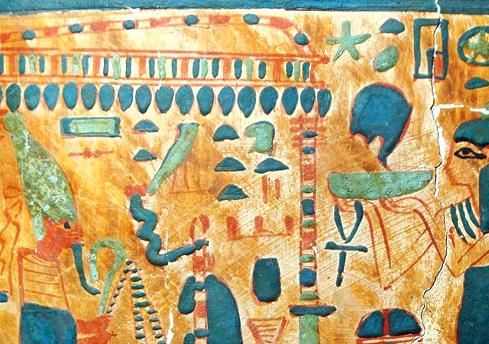
Cairo CG61031 Asetemachbjt D (Isetemkheb D) D21a, TT320
Outer coffin tub, outside, left
Outer coffin tub, outside, left
Cairo CG61034 Djedptahjwefanch was a second Prophet of Amun at the time of his burial in the attested 11th
year of the first king of the 22nd Tanite Dynasty, Scheschonq I. He was buried in usurped coffins.We do not
know if he had any family connection with the rulers of the 21a Theban Dynasty. We also do not know if he
held office during the last years of D21a. We know the date of his burial, but we do not know where that was.
Standard egyptological literature states that he was the last person to be buried in TT320. That would absurdly
imply that the large collection of royal and noble mummies, dating from the end of the 17th Dynasty (King
Seqenenraw) was already in the tomb of Pinodjem II and Nesychonsw. Only had Brugsch made a list of the
coffins as they were removed and on the simple logic of what is called a "stack" (last in is first out) could this
have been the final burial in TT320. We have no way of knowing when TT320 became a storage place for
important persons of the past. I believe that at some time after Djedptahjwefanch's death the Theban HPA in
office, Iuput, second son of King Scheschonq ordered all known important burial remains be collected and
sealed away in TT320, or in other tombs such as Bab el-Gasus.
year of the first king of the 22nd Tanite Dynasty, Scheschonq I. He was buried in usurped coffins.We do not
know if he had any family connection with the rulers of the 21a Theban Dynasty. We also do not know if he
held office during the last years of D21a. We know the date of his burial, but we do not know where that was.
Standard egyptological literature states that he was the last person to be buried in TT320. That would absurdly
imply that the large collection of royal and noble mummies, dating from the end of the 17th Dynasty (King
Seqenenraw) was already in the tomb of Pinodjem II and Nesychonsw. Only had Brugsch made a list of the
coffins as they were removed and on the simple logic of what is called a "stack" (last in is first out) could this
have been the final burial in TT320. We have no way of knowing when TT320 became a storage place for
important persons of the past. I believe that at some time after Djedptahjwefanch's death the Theban HPA in
office, Iuput, second son of King Scheschonq ordered all known important burial remains be collected and
sealed away in TT320, or in other tombs such as Bab el-Gasus.
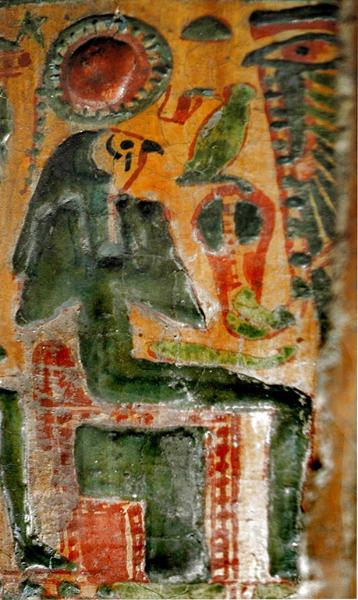
Cairo CG61030 Nesychonsw: Daughter of HPA Smendes II by a secondary wife, Tenthendjehuty. No
remains of these parents are known. This is one of those frustrating fragments of history in which birth
dates are not known, and thus so the relational ages of family members. Although Asetemcheb D was
his full sister and primary wife, mother of the final HPA, Psusenes III, who ends the dynasty,
Nesychonsw was the great love and favorite wife of HPA Paynedjem II, by whom he fathered four
children.
remains of these parents are known. This is one of those frustrating fragments of history in which birth
dates are not known, and thus so the relational ages of family members. Although Asetemcheb D was
his full sister and primary wife, mother of the final HPA, Psusenes III, who ends the dynasty,
Nesychonsw was the great love and favorite wife of HPA Paynedjem II, by whom he fathered four
children.
Although it was customary for well placed people to have their coffins made and decorated according to their
wishes, this was not the case with Nesychonsw. Her mummy shows a most attractive, healthy lady of not
more than thirty years of age. Her death without coffins of her own was certainly unexpected.
Pinodjem's principle sister-wife, Asetemachbjt D, had already had her coffins made. These were
requisitioned by Pinodjem for Nesychonsw's burial in the large new tomb (TT320) which was realized on his
order at once. His plan was that also he would be buried there when the time came. The tomb was to be used
only by the eternally loving pair, Nesychonsw and Pinodjem.
The images above show absolute proof of a white background. They are from the set of coffins originally
made for Asetemachbjt D. In most cases her name was painted out and replaced with that of Nesychonsw.
However some beautiful examples of the original owner's name are preserved. Examples of these names
can be seen in the COFFINS section of this site, where the question of "usurpation" will also be discussed.
wishes, this was not the case with Nesychonsw. Her mummy shows a most attractive, healthy lady of not
more than thirty years of age. Her death without coffins of her own was certainly unexpected.
Pinodjem's principle sister-wife, Asetemachbjt D, had already had her coffins made. These were
requisitioned by Pinodjem for Nesychonsw's burial in the large new tomb (TT320) which was realized on his
order at once. His plan was that also he would be buried there when the time came. The tomb was to be used
only by the eternally loving pair, Nesychonsw and Pinodjem.
The images above show absolute proof of a white background. They are from the set of coffins originally
made for Asetemachbjt D. In most cases her name was painted out and replaced with that of Nesychonsw.
However some beautiful examples of the original owner's name are preserved. Examples of these names
can be seen in the COFFINS section of this site, where the question of "usurpation" will also be discussed.
Cairo, CG61030 Nesychonsw:
D21a, TT320, mummy cover of
the set of coffins originally made
for Asetemachbjt D. The poor
quality of the entirely unedited
original image is due to
exposition ambiance, not a fault
of the photographer.
While proof of white is
everywhere, please examine
the precision of the central
pattern, thinking that this was
done freely by a human hand
without mistakes.
D21a, TT320, mummy cover of
the set of coffins originally made
for Asetemachbjt D. The poor
quality of the entirely unedited
original image is due to
exposition ambiance, not a fault
of the photographer.
While proof of white is
everywhere, please examine
the precision of the central
pattern, thinking that this was
done freely by a human hand
without mistakes.
Cairo, CG61030 Nesychonsw, mummy cover of coffins made originally for Asetemachbjt D
HPA Pinodjem II (993-970) died five years after his beloved
Nesychonsw and was buried beside her in TT320. Theirs are the only
original burials in what was later to become the highly populated
"Royal Cache"
Nesychonsw and was buried beside her in TT320. Theirs are the only
original burials in what was later to become the highly populated
"Royal Cache"
Asetemachbjt D (Isetemkheb D) was the daughter of HPA Mencheperraw and Asetemachbjt C (Isetemkheb C). In
egyptological literature she is often referred to as Isetemkheb C, because many scholars did not believe that
Asetemachbjt B existed and the leather funerary baldachin found in TT320 was assigned to the lady of that name whose
funerary remains and mummy were found there.
Please remember that we have absolutely no remains pertaining to the real Isetemkheb C.
Asetemachbjt D may have lived beyond the 13th year of her son HPA Psusennes III, but this is based on a single
inscription mentioning year 13, but not the name of the Tanite king whose 13th year it was.
egyptological literature she is often referred to as Isetemkheb C, because many scholars did not believe that
Asetemachbjt B existed and the leather funerary baldachin found in TT320 was assigned to the lady of that name whose
funerary remains and mummy were found there.
Please remember that we have absolutely no remains pertaining to the real Isetemkheb C.
Asetemachbjt D may have lived beyond the 13th year of her son HPA Psusennes III, but this is based on a single
inscription mentioning year 13, but not the name of the Tanite king whose 13th year it was.
Cairo CG61031 Asetemachbjt D (Isetemkheb D)
At left (outer coffin, tub, near head) we have typical white background between feathers. At the right (outer tub, left
side) we have a case of such poor varnishing that the white background is clear. Notice that Osiris is wearing the
green Duat version of the white crown
At left (outer coffin, tub, near head) we have typical white background between feathers. At the right (outer tub, left
side) we have a case of such poor varnishing that the white background is clear. Notice that Osiris is wearing the
green Duat version of the white crown
At the left we see the face mask of the outer coffin's lid.
At the right is an unprocessed original photo of a lady on the left side of the outer
tub.
At the right is an unprocessed original photo of a lady on the left side of the outer
tub.
Cairo CG61034 Djedptahjwefanch
D21a-22; 2nd Prophet of Amun. buried
934, location unknown. Transfered to
TT320, time unknown.
D21a-22; 2nd Prophet of Amun. buried
934, location unknown. Transfered to
TT320, time unknown.
Cairo CG61034 Djedptahjwefanch: processed to give true original colours after
varnishing. All resin varnishes are at least slightly yellowish. When freshly made,
they may seem transparent. Ancient Egyptian is a pistachio resin then found on the
South Arabian coast (Hadramout): believed to be extinct today. In any case it is not
the Chios resin used by European artists since the 15th century.
Here you can see the subtile changes from Egyptian Blue to green, depending on
the brush strokes and uneven thickness of their load. The makers must have seen
the varnish as transparent. They would not have wanted to make a carefully
painted blue vessel turn to a messy green.
The colour has largely fallen off the four true green coloured sections of the
offering plate. This is an inorganic green which is instable and tends to fall off.
We have noted this in a number of cases and need to make a real chemical study,
if we can obtain permission from the new SCA.
varnishing. All resin varnishes are at least slightly yellowish. When freshly made,
they may seem transparent. Ancient Egyptian is a pistachio resin then found on the
South Arabian coast (Hadramout): believed to be extinct today. In any case it is not
the Chios resin used by European artists since the 15th century.
Here you can see the subtile changes from Egyptian Blue to green, depending on
the brush strokes and uneven thickness of their load. The makers must have seen
the varnish as transparent. They would not have wanted to make a carefully
painted blue vessel turn to a messy green.
The colour has largely fallen off the four true green coloured sections of the
offering plate. This is an inorganic green which is instable and tends to fall off.
We have noted this in a number of cases and need to make a real chemical study,
if we can obtain permission from the new SCA.
This is the end of the "not yellow" consideration
E. Loring/CESRAS/05.04.2014
E. Loring/CESRAS/05.04.2014
